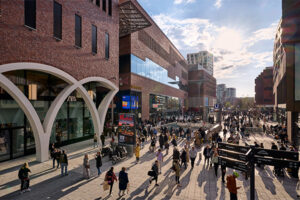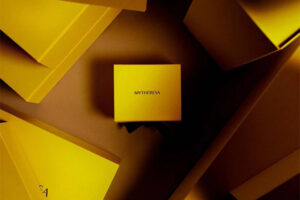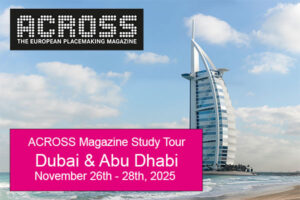The first Polish outlet center was established in 2002. At present, 14 such facilities are in operation with further projects and locations in the pipeline. In the 15 years this market segment has existed, developers have tried to create the optimal outlet center concept for customers. Although the existing schemes differ from one another, many of the solutions developers have elaborated are similar.
Polish outlet centers are generally located on the outskirts of the largest agglomerations, although recent years have also seen investments in regional cities like Białystok (Outlet Center Białystok and Outlet Białystok), Bydgoszcz (Outlet Center Bydgoszcz and Metropolitan Outlet), and Lublin (Outlet Center Lublin). As a result of repositioning one of the centers in Rzeszów another one is being prepared: Outlet Graffica.
The country’s outlet centers are small and medium-sized facilities with 10,000 to 25,000 sq m of GLA, usually developed in stages. Their architecture draws on the solutions of postindustrial facilities or “market towns.”
The average area of a shop is 150 to 200 sq m. Each of the outlet centers offers on average 90 to 100 units. The greatest number of shops can be found in Factory Kraków, Factory Annopol, and Fashion House Gdańsk. The largest outlet center in terms of are is Factory Kraków.
Most schemes’ tenant mix is based on a combination of a similar number of shops from the following sectors: a fashion mix, sport and outdoor, shoes, and women’s and men’s fashion. The exception to this model is Outlet Park Szczecin, with features more shops from the health and beauty sector and a supermarket and cinema.
Fashion House Gdańsk has the largest culinary offer
Another unusual feature is found in Ptak Outlet in Rzgów, which has relatively few women’s fashion shops, but a lot of stores with lingerie. Outlet Center Białystok is the only one to offer a large shop selling household appliances and white goods, RTV Euro AGD.
The broadest range of cafés and restaurants can be found in Fashion House Gdańsk, though all the centers feature dynamic development of gastronomic services. Increasingly popular playgrounds for children can be found in Fashion House in Piaseczno in Gdańsk and Sosnowiec, Factory in Kraków and Poznań, Ptak Outlet, and Outlet Center Lublin.
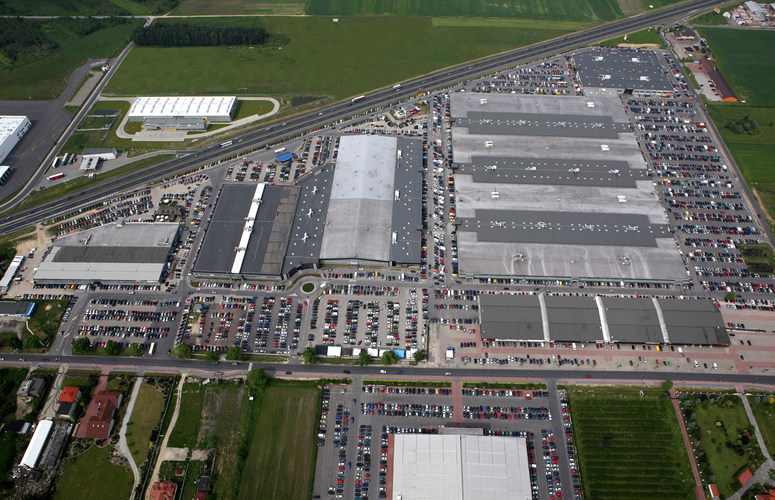
In Polish outlet centers, there are few shops with articles for children, jewelry and accessories, or multimedia and services. Tenants from such sectors as entertainment and recreation, groceries, and hobby are either absent from all centers or present only to a minimal degree.
More on the tenants: Outlet centers in Poland have over 380 tenants operating about 1,150 shops and service and foodservice providers. As many as 60 tenants (about 100 facilities), like pharmacies, drugstores, newsstands, cafés, restaurants, service points, and playgrounds for children, conduct operations complementary to the centers’ outlet function.
They account for about 16% of all entities operating in the outlet centers and about 8% of all facilities. This lease structure is the result of existing demand on the part of retail chains for this specific distribution channel.
According the report, about 60 to 80 retail chains operating in the Polish market have enough shops, and therefore sufficient stock, to be able to open their points of sale in outlet centers in major cities throughout the country.
Sounding out the market
Retail chains in Poland adopt various strategies concerning their operations in outlet centers. Apart from the traditional approach of selling out their stock, more than 10 retail chains, like Albione, Symbiosis, and Scot free, have opted for outlet centers as the principal channel through which to distribute their goods.
Retail chains are also opening their points of sale in outlet centers on a trial basis to sound out the market. This is how Pepe Jeans, Desiqual, Mountain Warehouse, Trespass, and others have come to the country. For marketing and charitable purposes, outlet centers use pop-up stores like H&M in Factory Annopol in 2014. A few retail chains like Monnari have decided to prepare collections specially for outlet centers.
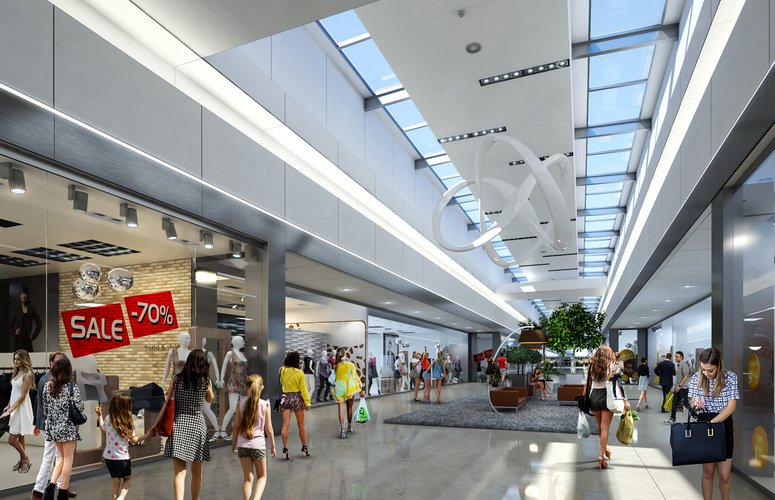
Some retail chains, like Rossmann, also choose to open non-outlet points of sale in those centers. A supplementary offer is also provided with cafes and bars (like So!Coffee and McDonald’s), newsagents (like In Medio), and services (like Wakacje.pl), all of which are increasingly common in outlet centers.
This situation results in major differences in lease structures in outlet centers—as many as 280 entities (73%) have only 1-3 facilities in outlet centers. The biggest group of tenants in outlet centers are entities from the following sectors: fashion mix (55 entities) and cafes and restaurants (45 entities). The broadest range of outlet offers in terms of the number of points of sale is seen in the sectors mixed fashion (225), sport and outdoor (155), men’s fashion (145), footwear (125), and women’s fashion (115).
The most common tenants include Dajar, Lavard, Diverse, Big Star, Wittchen, 4F, Puma, McArthur, and Ochnik. The most common anchor tenants are Adidas, Puma, Reebok, and Reserved. There are no brands from the “premium sector” in Polish outlet centers and only 10 to 20 “top-shelf” brands in pricing terms.
Some of the outlet centers, following the pattern set by traditional malls, dedicate separate alleys to such offers. That is the case in Fashion House Piaseczno, where the neighbors Tommy Hilfiger, Liu Jo, Hugo Boss, Michael Kors, and Armani Outlet shops constitute the beginnings of an “oasis of luxury.”
Relatively few retail chains in Poland treat outlet operations on a multichannel basis. While systems of discounts and sales are coordinated among points of sale in traditional mall and outlet centers, that is not necessarily the case in online shops. Special online outlets/outlet departments are run by the largest retailers, such as H&M, Zara, and Reserved.
Tourists as a target group
All in all, outlet centers in Western Europe differ considerably from those in Poland. The location of those in Western Europe allows them to keep a sufficient distance from competitors. The schemes are much bigger than Polish outlet centers and their points of sale are also larger.
The premium sector shops, which are numerous in outlet centers in Western Europe, are a magnet to attract customers. They offer significant price reductions, often reaching as far as 70%. What is more, many retailers operating stores situated in Western European outlet centers prepare special collections just for such facilities.
Thanks to proactive management, shopping in outlet centers in Western Europe provides the expected consumer experience. Customers can participate in various types of events, concerts, fashion shows, and night shopping, while benefitting from the advice provided there by shopping assistants and stylists.
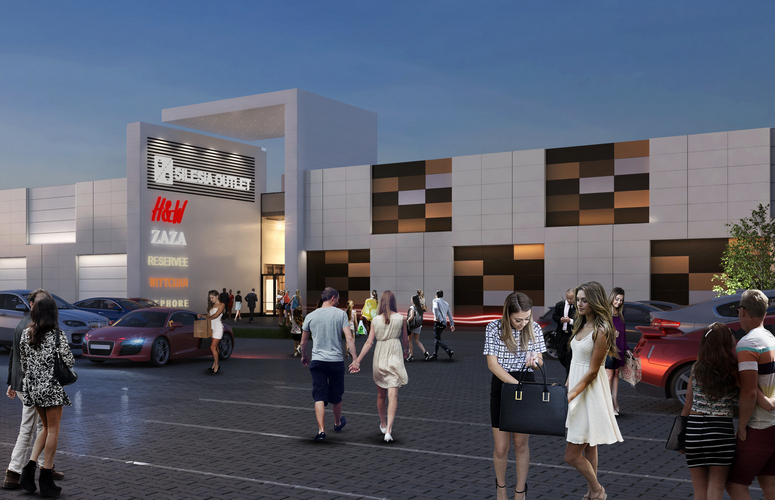
Shopping tourism, especially from outside the European Union, is an important source of customers. With those tourists in mind, they deliver shopping guides to tourist information points and provide shuttle buses and VIP shuttles from the cities. Tourists are offered tax-free shopping, baggage storage, tourist guides on local attractions, and discounts in nearby hotels and restaurants in the outlet centers.
Many outlet centers draw attention with their original architecture and ample supplementary infrastructure like services and gastronomy. They also offer numerous amenities like information points, multilingual personnel, ample free parking, playgrounds for children, gift cards, free wi-fi, etc.
Some of these experiences are impossible to transfer to the Polish market directly for obvious reasons, like locations, the major presence of premium brands, and shop size, yet some of them are already being implemented in the best national outlet centers, especially with regard to supplementary infrastructure and services for tourists. Polish outlet centers also draw on European experiences in order to create “bargain-hunting” fashion and provide “shopping experience.”
Opportunities and threats
For a number of reasons, Polish outlet centers are not, and will not be for a long time yet, similar to those seen in Western European countries. The principal reason is the absence of sufficient critical mass (the number of retail chains and points of sale) and a purchasing power lower than in the West, which results in a limited number of premium brands in the country’s market. Nevertheless, the increasing competition in this market segment will force numerous objects to undergo qualitative changes in order to survive.
Outlet center attractiveness will be enhanced by the development of their offers and by improving the operational performance of both outlet centers and individual points of sale operating there. Outlet centers are gearing up for extension with complementary functions capable of attracting consumers thanks to synergies in shopping centers.
Depending on location and specific market characteristics, this will be provided by large grocery and non-grocery shops, cinemas, or other supplementary providers. Besides extensions, accompanying infrastructure will also be added—including new technologies—to improve the comfort of shopping.
It won’t just be outlet centers that change, though: Individual outlets operating within them will, too. The “premium offer” will grow in traditional malls, high street locations, and outlet centers in line with the increasing wealth of the Polish people.
Retail chains will “discover” outlet centers as a good place to test the market, thus increasing the popularity of pop-up stores. Collections prepared especially for outlet centers will appear more frequently. The pricing policy will also change to emphasize the appeal of bargains. There will be more outlet sales attracting customers to outlet centers.
In the future, outlet center marketing will require much broader cooperation between the owner and tenants, particularly in the context of shopping tourism services and multichannel sales.
The future, however, also brings problems and threats. Rising competition, with 14 existing centers and five more planned, makes the reduced expansion of international and national retail chains observed in a number of sectors a worrying phenomenon, since they are potential tenants for outlet centers.
Given that outlet centers rely on the dominance of weekend shopping, this market segment could also be particularly hard-hit by the effects of planned legal regulations related to restrictions on trade on Sundays.
About the report
In 2002, the first outlet center established in Poland was Factory Ursus, built by Neinver in Warsaw. At present, 14 outlet centers are operating on a total lettable area of about 250,000 sq m.
The existence of this market segment for over 15 years inspired the authors of the report “Bargain Hunting—The Potential of Outlet Centers in Poland” by Colliers International to pore over the segment’s potential and development prospects.
The report presents the results of a consumer survey, conducted in cooperation with IQS in February and March 2017, concerning the perception of outlet centers by Polish consumers and their expectations from those specific commercial facilities.

